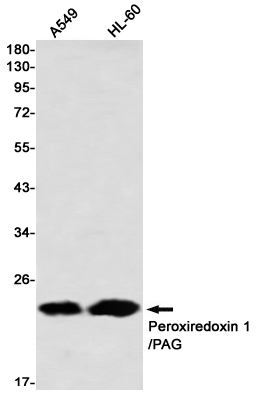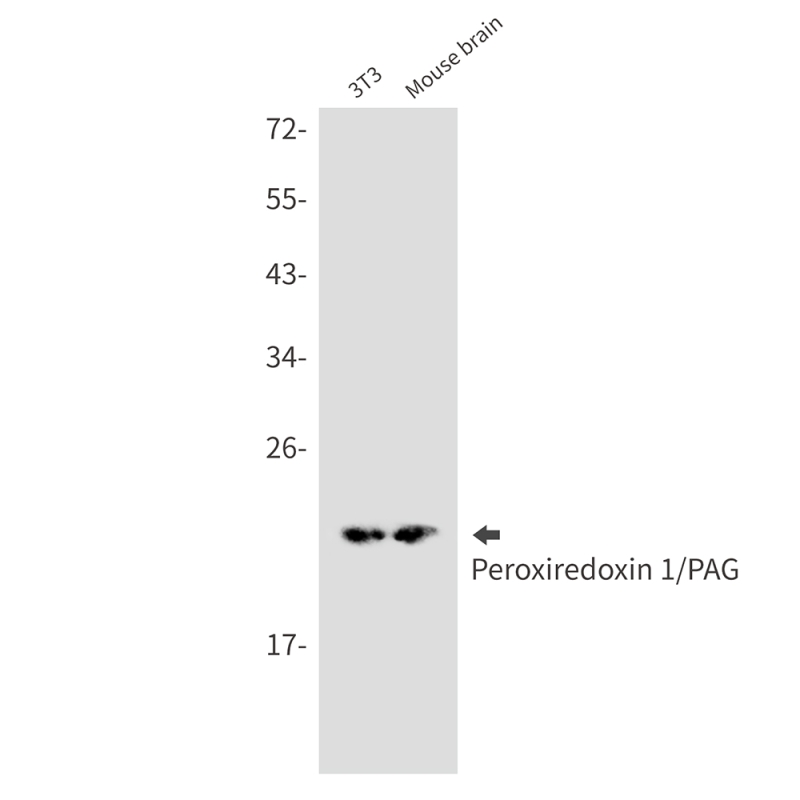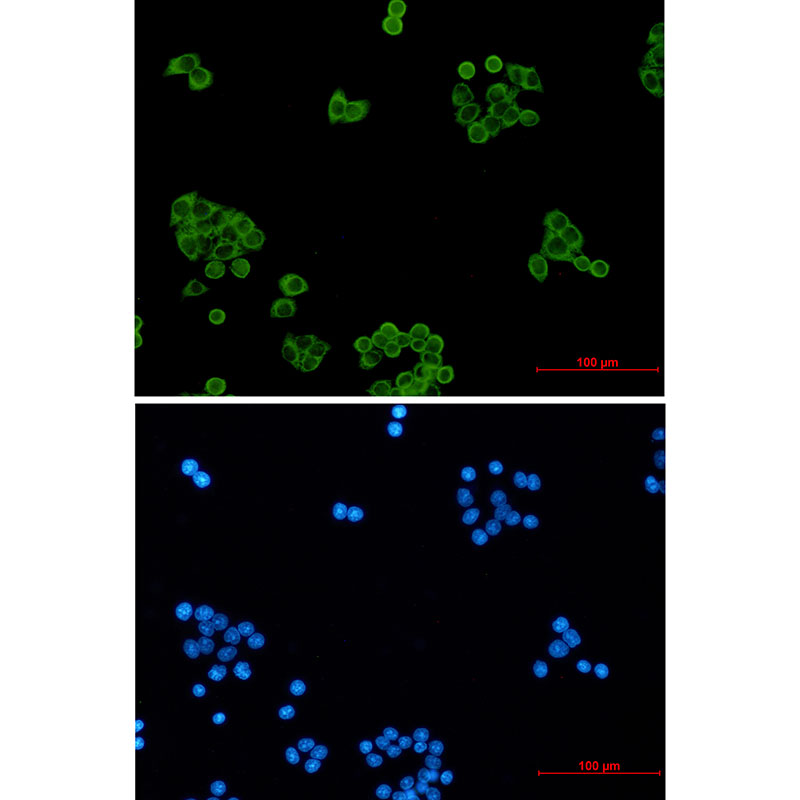


| WB | 1/500-1/1000 | Human,Mouse,Rat |
| IF | 1/20 | Human,Mouse,Rat |
| IHC | 咨询技术 | Human,Mouse,Rat |
| ICC | 1/50-1/200 | Human,Mouse,Rat |
| FCM | 咨询技术 | Human,Mouse,Rat |
| Elisa | 咨询技术 | Human,Mouse,Rat |
| Aliases | PRDX1; PAGA; PAGB; TDPX2; Peroxiredoxin-1; Natural killer cell-enhancing factor A; NKEF-A; Proliferation-associated gene protein; PAG; Thioredoxin peroxidase 2; Thioredoxin-dependent peroxide reductase 2 |
| Entrez GeneID | 5052 |
| WB Predicted band size | Calculated MW: 22 kDa; Observed MW: 22 kDa |
| Host/Isotype | Rabbit IgG |
| Antibody Type | Primary antibody |
| Storage | Store at 4°C short term. Aliquot and store at -20°C long term. Avoid freeze/thaw cycles. |
| Species Reactivity | Human,Mouse |
| Immunogen | A synthetic peptide of human Peroxiredoxin 1/PAG |
| Formulation | Purified antibody in TBS with 0.05% sodium azide,0.05%BSA and 50% glycerol. |
+ +
以下是关于Peroxiredoxin 1(PRDX1)抗体的3篇参考文献示例,包含文献名称、作者及摘要内容概括:
---
1. **文献名称**:*"Peroxiredoxin 1 functions as a signal peroxidase to sense, transduce, and translate intracellular redox signals"*
**作者**:Rhee SG et al.
**摘要**:该研究阐明了PRDX1通过其抗氧化酶活性参与细胞内氧化还原信号传导的分子机制,利用特异性抗体验证了其在H₂O₂介导的信号通路中的关键作用,并揭示了其作为“氧化感受器”的功能。
2. **文献名称**:*"Overexpression of Peroxiredoxin 1 in lung cancer and its association with poor prognosis"*
**作者**:Ishii T et al.
**摘要**:通过免疫组化及Western blot分析(使用PRDX1特异性抗体),发现PRDX1在肺癌组织中显著高表达,且与患者生存率降低相关,提示其可作为肺癌预后的潜在生物标志物。
3. **文献名称**:*"Peroxiredoxin 1 protects against Alzheimer’s disease by reducing oxidative stress via modulation of the MAPK pathway"*
**作者**:Fang J et al.
**摘要**:研究利用PRDX1抗体检测阿尔茨海默病模型小鼠脑组织,发现PRDX1通过抑制MAPK通路减轻氧化应激损伤,从而减缓神经退行性病变,为治疗提供了新靶点。
---
以上文献均通过PRDX1抗体进行蛋白定位、表达水平或功能研究,覆盖氧化应激、癌症及神经疾病领域。建议通过PubMed或Web of Science核实具体发表年份及期刊卷页信息。
Peroxiredoxin 1 (PRDX1) is a member of the peroxiredoxin family of antioxidant enzymes that play a critical role in regulating cellular redox homeostasis. It functions primarily to neutralize reactive oxygen species (ROS), such as hydrogen peroxide, thereby protecting cells from oxidative damage. Beyond its antioxidant activity, PRDX1 is involved in diverse cellular processes, including cell proliferation, apoptosis, and immune response regulation. It also participates in redox signaling pathways and interacts with various proteins to modulate their activity. Dysregulation of PRDX1 has been linked to multiple pathologies, including cancer, neurodegenerative diseases, and inflammatory disorders, highlighting its importance in both physiological and disease contexts.
Antibodies targeting PRDX1 are essential tools for studying its expression, localization, and function. These antibodies enable the detection of PRDX1 in techniques like Western blotting, immunohistochemistry (IHC), and immunofluorescence (IF). They are widely used to investigate PRDX1's role in oxidative stress responses, its tissue-specific distribution, and its potential as a biomarker in diseases such as cancer, where its expression levels may correlate with tumor progression or therapeutic resistance. Additionally, PRDX1 antibodies aid in exploring post-translational modifications (e.g., oxidation or phosphorylation) that regulate its activity. Researchers often verify antibody specificity using knockout controls or siRNA-mediated knockdown to ensure accurate experimental results. As PRDX1 continues to emerge as a therapeutic target, its antibodies remain vital for mechanistic studies and drug development.
×